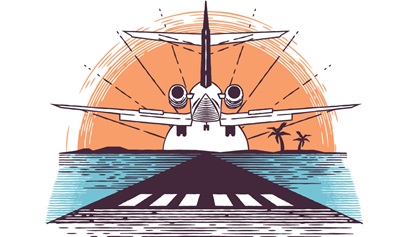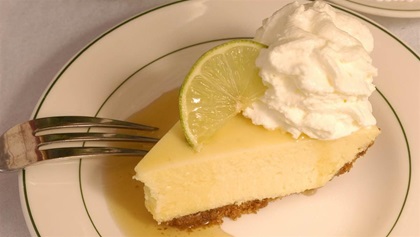The Florida Keys: No passport required
The Keys are unlike anywhere else
The Florida Keys












 To the east, ritzy Miami and Key Largo’s Ocean Reef Club. To the west, the laidback vibe and party scene of Key West. In between, a vast patchwork of islands that many skip on their way to what they think is better fishing, bars, and a few days of perfect island life.
To the east, ritzy Miami and Key Largo’s Ocean Reef Club. To the west, the laidback vibe and party scene of Key West. In between, a vast patchwork of islands that many skip on their way to what they think is better fishing, bars, and a few days of perfect island life.
They’re making a mistake.
Summerland Key, one of more than 1,700 islands that make up the Keys, is a paradise that connects air, land, and sea like few other places on Earth. The privately owned, private-use airport primarily serves the residents who surround the 2,500 feet of concrete, but anyone can pay a fee if they want a unique experience. Because at Summerland you can land, park at your house, and step out the back door onto a boat dock that takes you straight into a deepwater channel.
 Matt Stettner uses this to his advantage. Stettner manages the airport when he’s not playing in an F–5 at Naval Air Station Key West, where he’s been stationed for the past five years. An avid fisherman and diver, Stettner hops in his Bonanza, climbs to 500 feet, and spots fish or clear water for diving. Then he lands and hops in the boat and cruises to his target. “I have a runway in my front yard, a canal in my backyard, and I can go downstairs and pick,” he said. “I can shovel money in either direction.”
Matt Stettner uses this to his advantage. Stettner manages the airport when he’s not playing in an F–5 at Naval Air Station Key West, where he’s been stationed for the past five years. An avid fisherman and diver, Stettner hops in his Bonanza, climbs to 500 feet, and spots fish or clear water for diving. Then he lands and hops in the boat and cruises to his target. “I have a runway in my front yard, a canal in my backyard, and I can go downstairs and pick,” he said. “I can shovel money in either direction.”
 Summerland is also unusual because despite looking and feeling like a fly-in community, the houses and runway have no relation to one another. Anyone can buy a share in the runway without owning a house, and no one who owns a house is required to have a share in the runway. It also helps to facilitate a perk where guests can pay a reasonable fee to land at Summerland, rent a house there, and use it as a base for a Keys getaway. Just one thing—you must be on your game. “I’ve landed on several aircraft carriers in my life,” Stettner said. “The first time I was on final approach into here and I was thinking, ‘This runway’s not getting any wider. I’m going to need to pay attention.’” Although plenty long for most GA aircraft, the runway is only 20 feet wide.
Summerland is also unusual because despite looking and feeling like a fly-in community, the houses and runway have no relation to one another. Anyone can buy a share in the runway without owning a house, and no one who owns a house is required to have a share in the runway. It also helps to facilitate a perk where guests can pay a reasonable fee to land at Summerland, rent a house there, and use it as a base for a Keys getaway. Just one thing—you must be on your game. “I’ve landed on several aircraft carriers in my life,” Stettner said. “The first time I was on final approach into here and I was thinking, ‘This runway’s not getting any wider. I’m going to need to pay attention.’” Although plenty long for most GA aircraft, the runway is only 20 feet wide.
The Keys have a deserved reputation as party central. The long association with hard-drinking pirates and frequent bargoers like Ernest Hemingway helped create a mystique that current events such as Fantasy Fest have permanently cemented into the lore of the place. Described as a street party for adults, this 10-day bash at the end of October is an almost-anything-goes celebration of glitter, body paint, and general debauchery.
 Yet, many visitors to the Keys never even make it to Key West, the end of U.S. Route 1 and the start of the party scene. For them, the Keys are about nature. As you fly farther south along the islands, the water is what’s intoxicating. It changes from browns and deep blues to the pale blues, turquoise, and greens of the tropics. From low altitude you can easily spot large sea turtles, dolphin pods, sharks, and other large fish. And then there’s the reef.
Yet, many visitors to the Keys never even make it to Key West, the end of U.S. Route 1 and the start of the party scene. For them, the Keys are about nature. As you fly farther south along the islands, the water is what’s intoxicating. It changes from browns and deep blues to the pale blues, turquoise, and greens of the tropics. From low altitude you can easily spot large sea turtles, dolphin pods, sharks, and other large fish. And then there’s the reef.
Although long known as a good and accessible dive location, few are aware of the abundant reef structure just offshore of the Keys. Stretching from near Miami to about 60 miles west of Key West, and just a few miles offshore, the Florida Reef is the third largest in the world, after Australia’s Great Barrier Reef and the Belize Barrier Reef. It is home to more than 1,400 species of plants and animals, and it is the only living reef in the continental United States. It’s also easily accessible and great for beginning divers.
 Hard as it may be to believe, some people who visit the Keys fancy neither the legendary party scene nor going out onto the abundant riches of the water all around them. For them, history is the draw. Hemingway spent much of the 1930s at a beautiful French Colonial-style home that is open for tours. Visitors can also tour the Truman Little White House, a grand winter residence the thirty-third president used often while he was in office.
Hard as it may be to believe, some people who visit the Keys fancy neither the legendary party scene nor going out onto the abundant riches of the water all around them. For them, history is the draw. Hemingway spent much of the 1930s at a beautiful French Colonial-style home that is open for tours. Visitors can also tour the Truman Little White House, a grand winter residence the thirty-third president used often while he was in office.
But for many pilots, the draw of the Keys is the flying. The chain of islands offers it all. The weather is fantastic, the sights wonderful, and airports plentiful. In all, there are nine charted landing locations, including two seaplane bases, Key West Naval Air Station, Key West International, Marathon International, and four private strips. The private strips range from Sugarloaf Shores, 2,700 feet of pavement a few miles northeast of Key West that serves primarily as the base for a popular skydiving operation, to the Ocean Reef Club, a swanky community with a long private runway, jet fuel, and more.
Bob Raskey is a pilot for a major airline, where he also leads outreach to encourage the next generation of pilots. He’s had a house on Summerland for several years, and he commutes with a Piper Aztec and Cherokee Six. He loves the wide variety of activities in the area, including the historic locations of Key West, the fishing from Marathon, and especially the diving. “We have some of the best diving in the world,” he said. Looe Key, just 15 minutes by boat south of Summerland, is part of the Florida Keys National Marine Sanctuary. It’s one of the area’s best dive sites, but certainly not the only one.
 Raskey’s daughter Savannah has been coming down since she was 8. Now a pilot, she hosts a popular YouTube channel, SavyTraveler. “I love to take off at sunrise and cruise around,” she said. “It’s cool to be able to see the Keys from above and below the water.”
Raskey’s daughter Savannah has been coming down since she was 8. Now a pilot, she hosts a popular YouTube channel, SavyTraveler. “I love to take off at sunrise and cruise around,” she said. “It’s cool to be able to see the Keys from above and below the water.”
Florida is deceptively long. Every parent who has entered the Sunshine State driving on Interstate 95 knows this. There’s an initial rush of joy at finally seeing the “Welcome to Florida” sign, which quickly turns to despair at realizing it’s another nine hours to Key West!
Flying offers some advantage, but there’s still a lot of ground to cover. In a Cessna 172 you’re looking at three hours to get down the peninsula. In that time you could fly from Boston to Washington, D.C., or New York to Raleigh, North Carolina. Yet it’s the remoteness of the Keys that makes it such a special place. Part Caribbean, part Florida, the Keys exist in a place that is quite literally far from anything else.
Throw in spectacular flying with some great things to do on land, and you have a pilot’s paradise. It’s worth the long flight down.
Email [email protected]

 Ernest Hemingway House. Located on Key West, this beautiful French Colonial was the home of the famous author for about 10 years in the 1930s. You can tour the grounds, and meet a number of six-toed cats descended from Hemingway’s beloved Snowball.
Ernest Hemingway House. Located on Key West, this beautiful French Colonial was the home of the famous author for about 10 years in the 1930s. You can tour the grounds, and meet a number of six-toed cats descended from Hemingway’s beloved Snowball. Key Lime pie. Lots of places make lime custard pie, but the Keys are famous for their unique Key Lime pie. Described as sweeter and more floral than the well-known Persian lime, Key limes were cultivated in the area until the early 1900s. You can sample it almost anywhere, but locals say to check out Kermit’s Key West Key Lime Pie Shop or the Key Life Key Lime Pie Company.
Key Lime pie. Lots of places make lime custard pie, but the Keys are famous for their unique Key Lime pie. Described as sweeter and more floral than the well-known Persian lime, Key limes were cultivated in the area until the early 1900s. You can sample it almost anywhere, but locals say to check out Kermit’s Key West Key Lime Pie Shop or the Key Life Key Lime Pie Company. 


